
Leveling your yard can help with drainage and prevent damage to your home. Learn the cost to level a yard and what factors can affect the price.
Landscaping projects near water often have sloping and floodplain issues. It takes extra planning to create your perfect lakeside escape.


Living on the lakefront can be joyful and fulfilling, and that's helped by having that perfect outdoor space. Take a look at the ideas and tips we've put together to get a little inspiration for your own lakefront landscape.

Here, a large strip of sandy beach accents the shoreline. The small, natural boulder bulkhead sits back to the upper edge of the beach, where it protects the lawn and property from erosion. There are plenty of shady, sheltered spots from which to enjoy the lake view, too, with comfy chairs and sofas located in the shade of the overhead deck. You can build your own floating dock in just one weekend, to level up your lakeside enjoyment.

There's minimal landscaping here, with most of the yard given over to the lawn. Tall, well-established trees, whose roots help limit erosion, give much-needed shade in the dog days of summer. A small strip of beach claims one side of the shore, bordered by the bulkhead, and the other features many water-loving plants. Those water plants are a form of rewilding, providing habitat for wildlife, and helping protect the shore from erosion.

Here, we have an elevated lake view, giving a better, uninterrupted view of the water. The raised deck is big enough for entertaining, and the wooden railing helps to keep everyone safe. This could be a lovely family space, particularly if you were to add outdoor lighting, so you could enjoy it day or night.
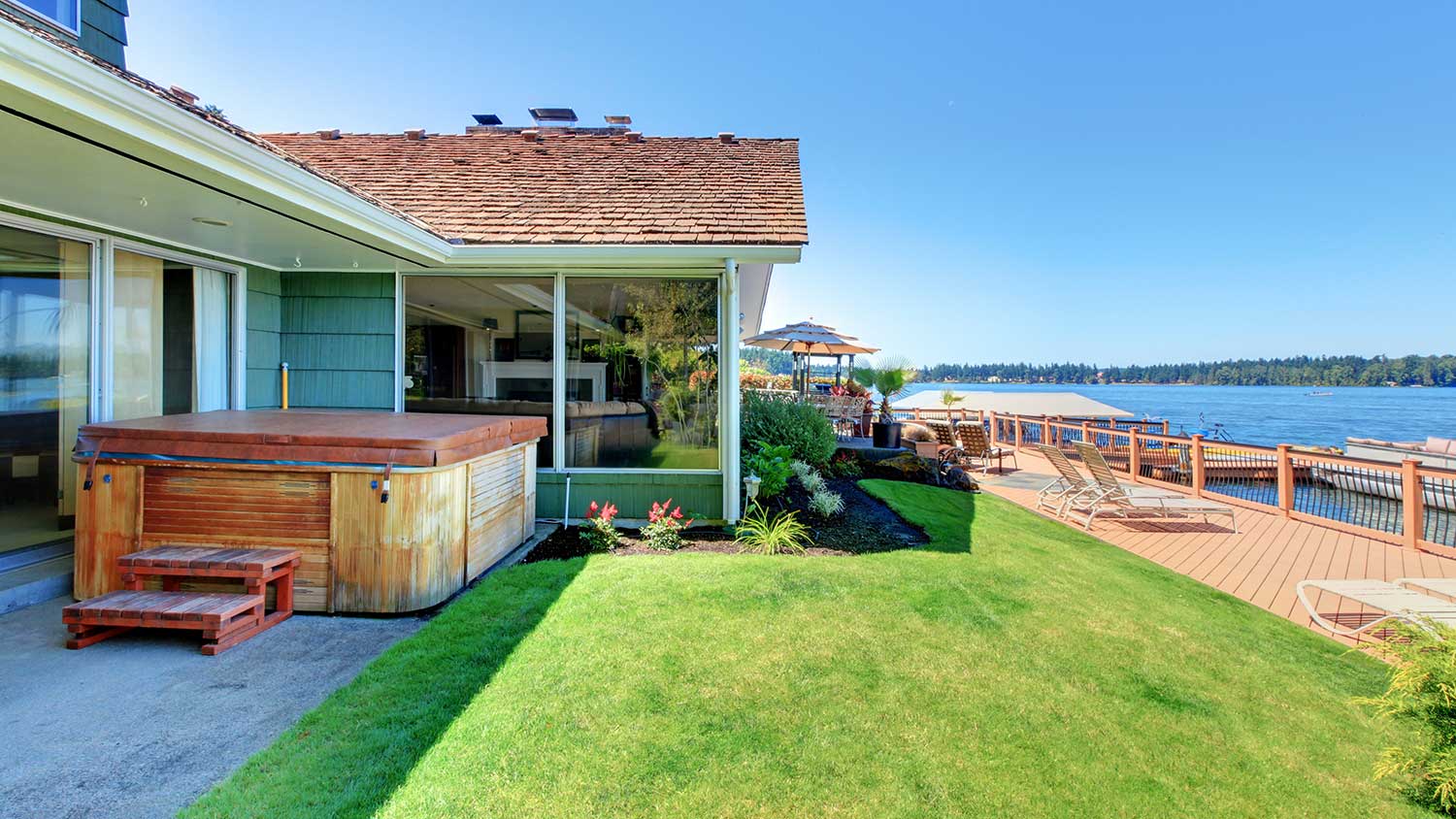
This house keeps nature at bay while enjoying the lakefront. The manicured lawn and carefully maintained flowerbeds bordering the property are pristine, making this style a good choice if you enjoy a heavily landscaped yard. The elevated deck, complete with sun loungers, lets you observe the happenings on the lake from a comfortable distance.
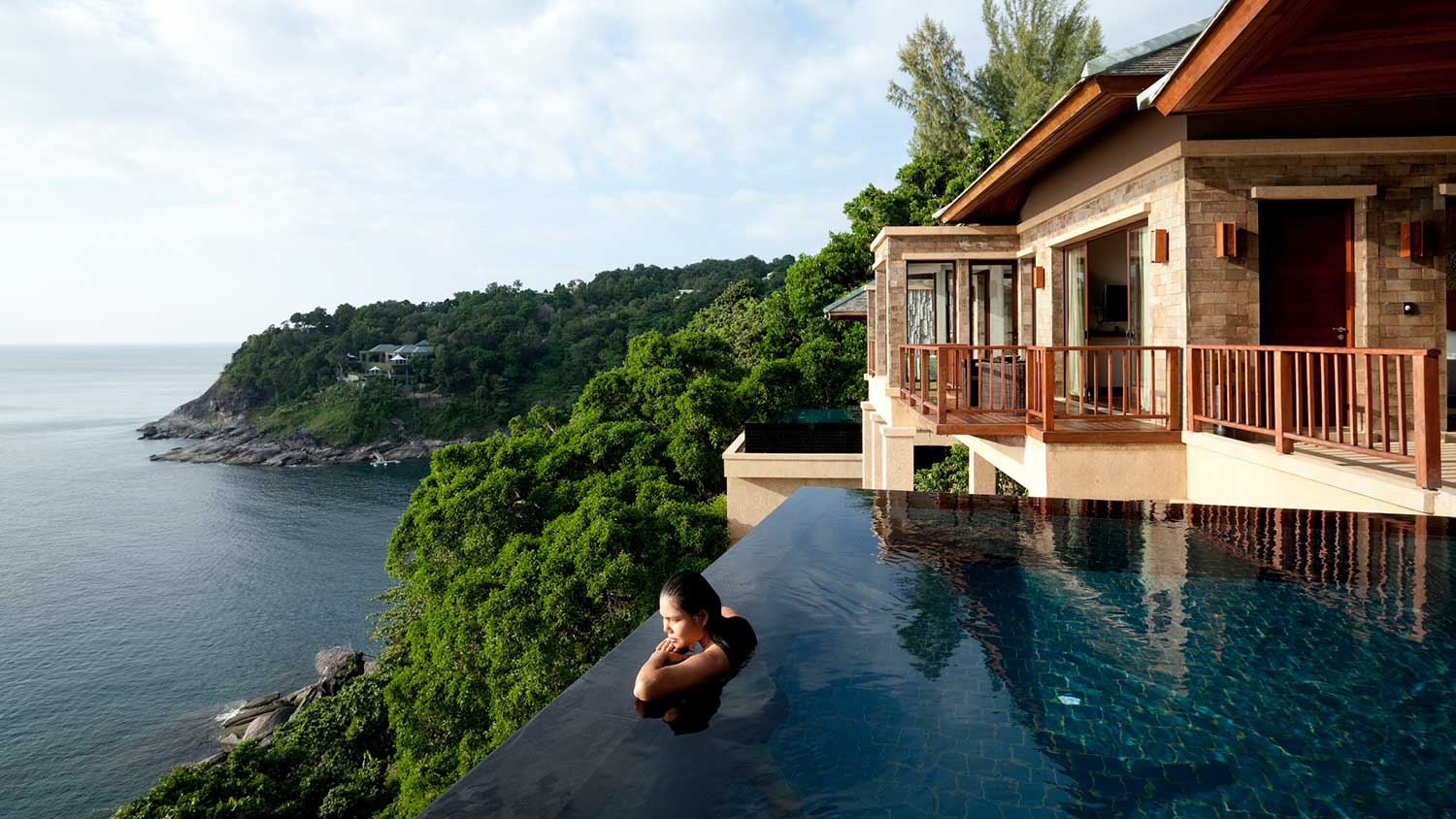
If you want something unique and have a property elevated well above the shoreline, how about adding an infinity-edge pool? A vanishing edge pool adds a whole new dimension to the look and feel of your property and provides a breathtaking, uninterrupted view of the water.
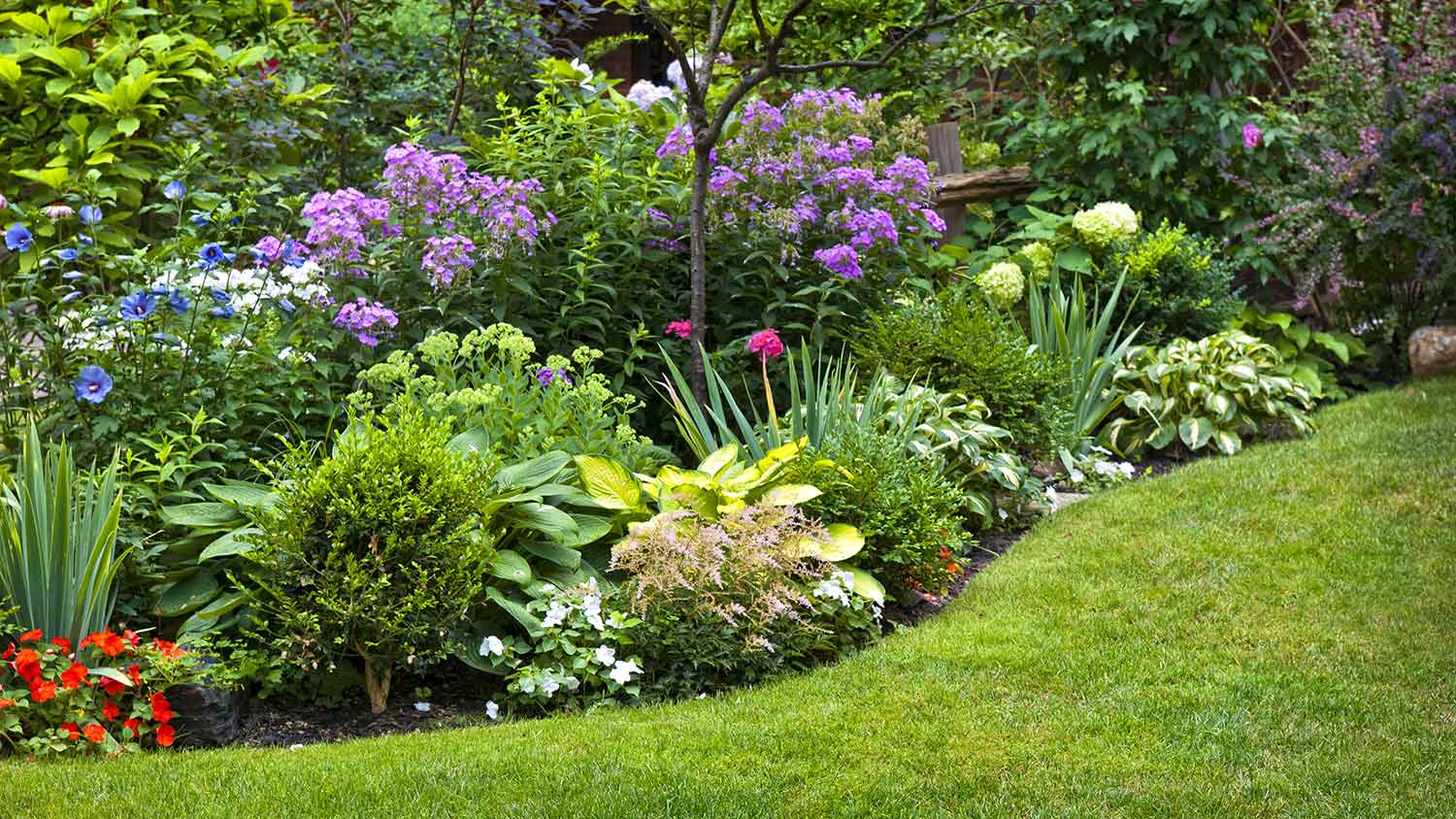
Perennials are a great way of adding foliage because, unlike annuals, they just get bigger and stronger every year. So, using perennials for landscaping is a smart way to get a riot of color, add ground cover, and attract pollinators and beneficial bugs to your garden with minimal ongoing effort.
Because perennials last for years, they develop deep, strong, complex root systems that help limit the erosion that can occur on or near the shore. For the best aesthetic, choose plants of varying heights, colors, and growth habits, and select species that bloom at different times of the year, so you've got color and texture for as long as possible every season.

Xeriscaping involves using succulents of all sizes and types in place of your average garden plant. If you're in a hot and arid area with little rainfall, xeriscaping is a smart move. Adding plants can have a dramatic impact on your lakefront’s look. As with perennials in more temperate climates, the succulents develop strong roots that help limit erosion and soil runoff.
Sure, you can grow some perennials in arid climates, but they need constant attention, irrigation, and usually at least some shade. In contrast, the right xeriscaping plants can survive with very little maintenance.
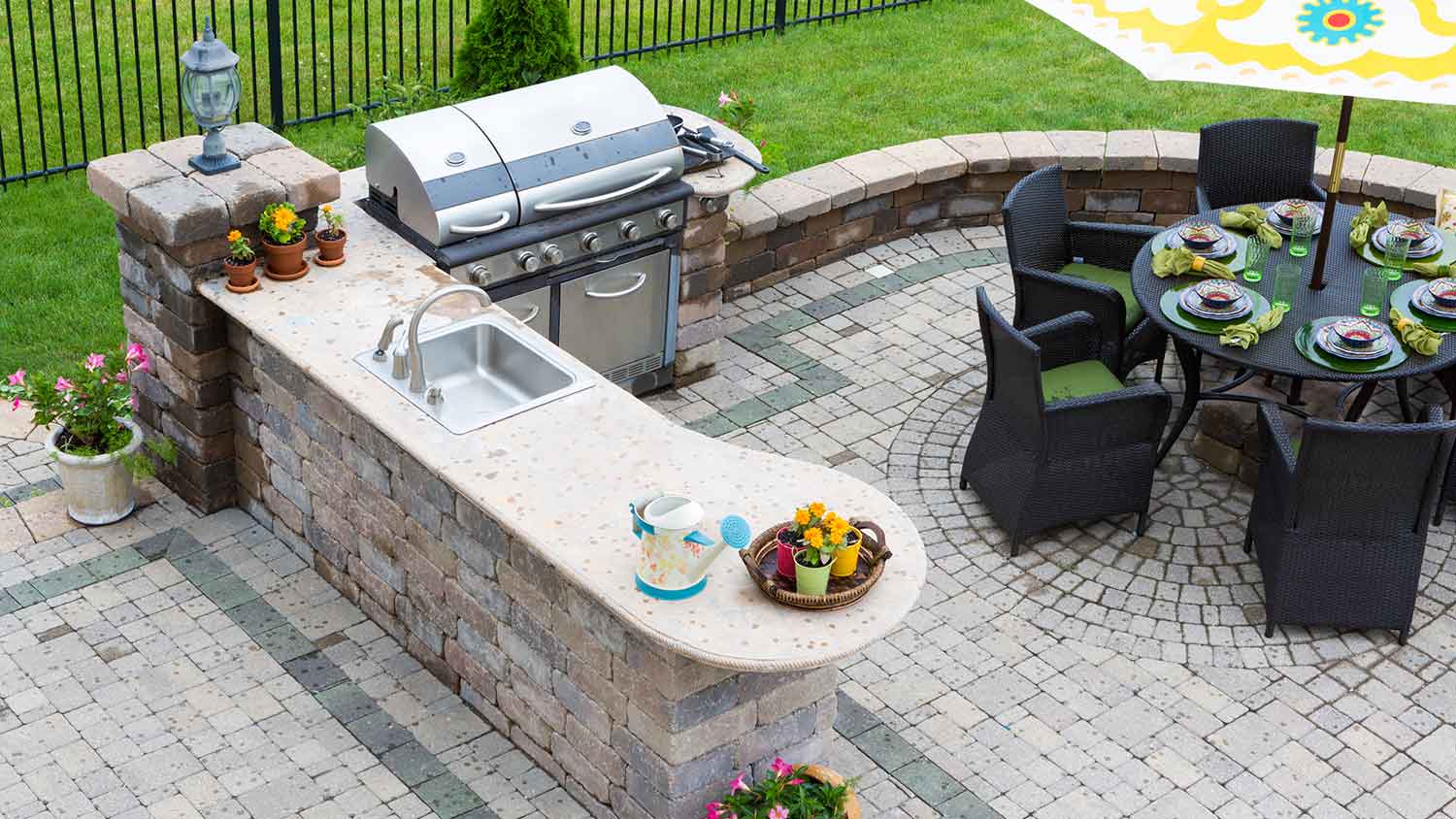
Hardscaping brings texture and functionality to your space. Adding a patio with a firepit and an outdoor seating area is a great way to extend the home comforts outside so you can comfortably enjoy your lake view. You could add lighting, a full outdoor kitchen and living space, or a deck with a hot tub and a few Adirondack chairs.
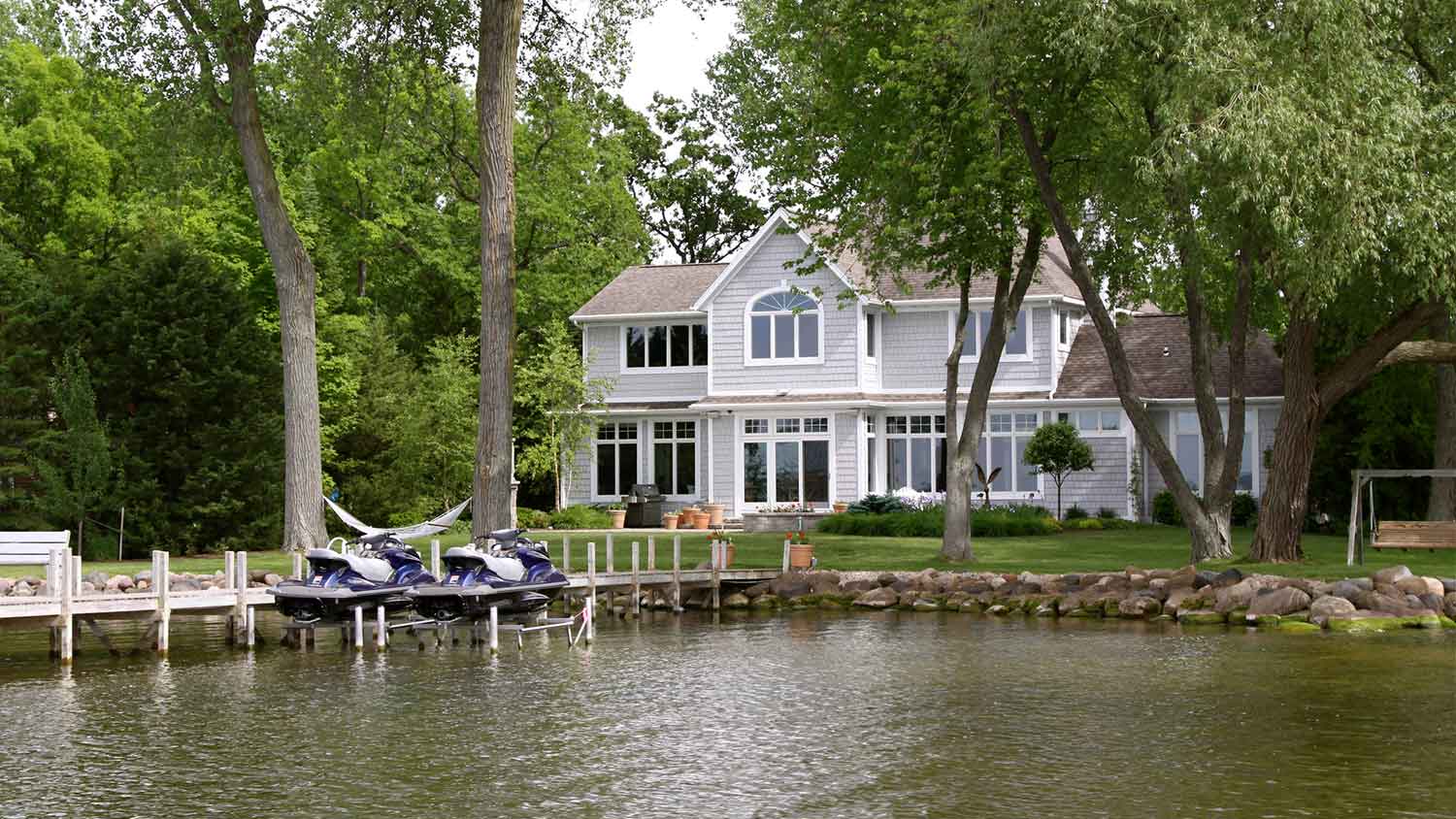
If you want to bring the beach to your home, why not make a beachy cove on the shoreline? You'll need to hire a local landscaper who specializes in lakefront properties, of course, but it's definitely doable. They create an artificial cove with a sandy beach and pull back that section of bulkhead. This creates a small secluded sandy cove while still protecting the property behind with the drain-back bulkhead.
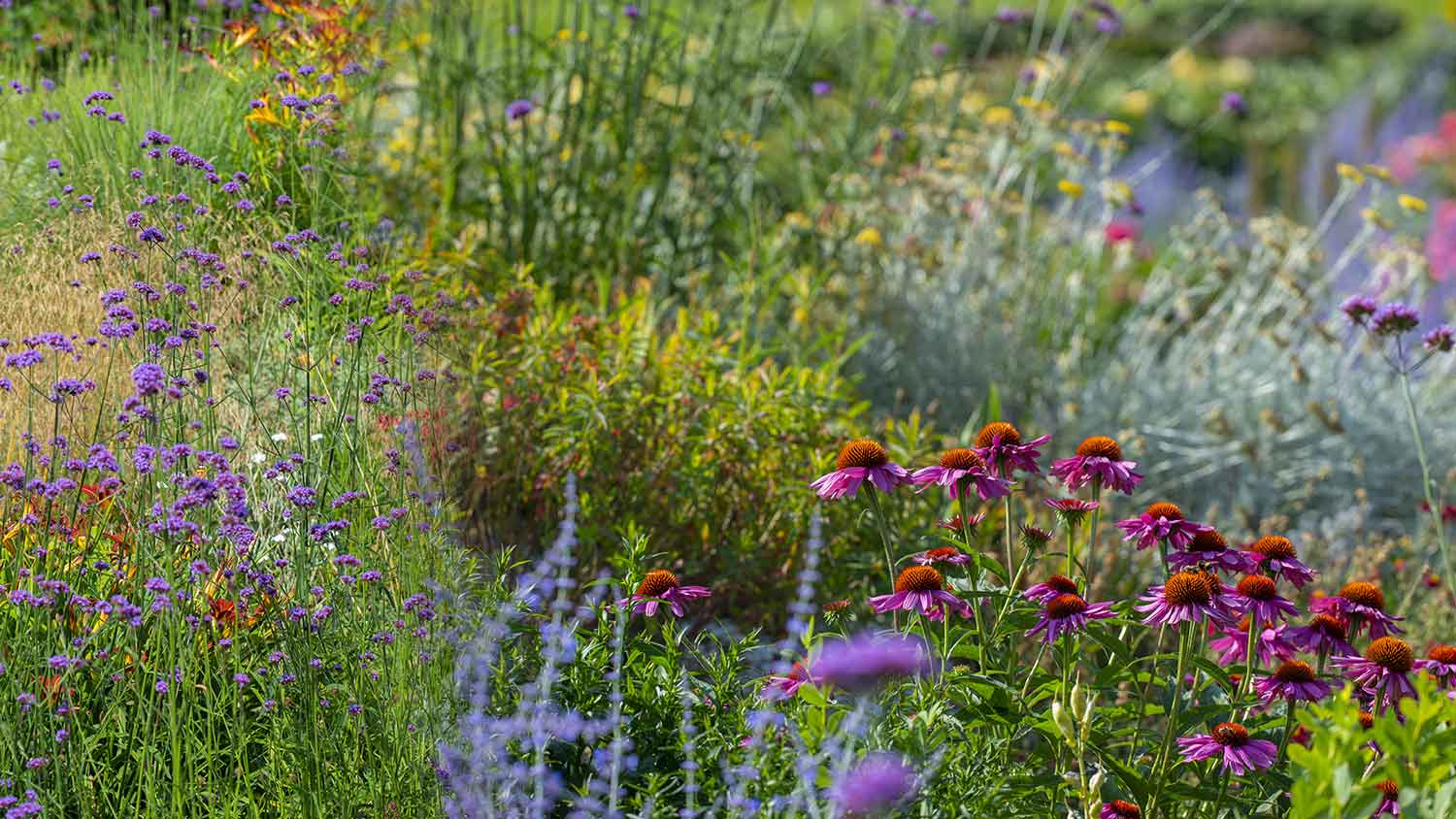
If you appreciate a more natural aesthetic and want to create a haven for wildlife and insects, then rewilding is a solid option. It involves reintroducing native plants and letting them grow wild, just as they would if there wasn't a house and yard on the shore.
Bringing a little natural, organic chaos into your outdoor space and embracing a slice of messy, untamed nature is fun and exhilarating and lets you reconnect with the natural world in a positive, controlled way. And you don't have to do the whole yard this way. Why not just do a portion of the shoreline? Or maybe rewild a small border on either side of a pathway down to the shore.
From average costs to expert advice, get all the answers you need to get your job done.

Leveling your yard can help with drainage and prevent damage to your home. Learn the cost to level a yard and what factors can affect the price.

Xeriscape costs depend on materials, the size of your yard, and if you DIY. This guide will help you determine what your xeriscaping project will cost.

What are average sod installation prices? Learn how much sod costs based on factors like square footage, land prep, land condition, and more.

Do you tip landscapers? Talking about tipping is often seen as a taboo, but there are a lot of nuances to getting the numbers right. This guide can help.

Do your hedges need a trim? Learn how to trim hedges correctly, key tips to keep them healthy, and how to stay safe while tackling the task.
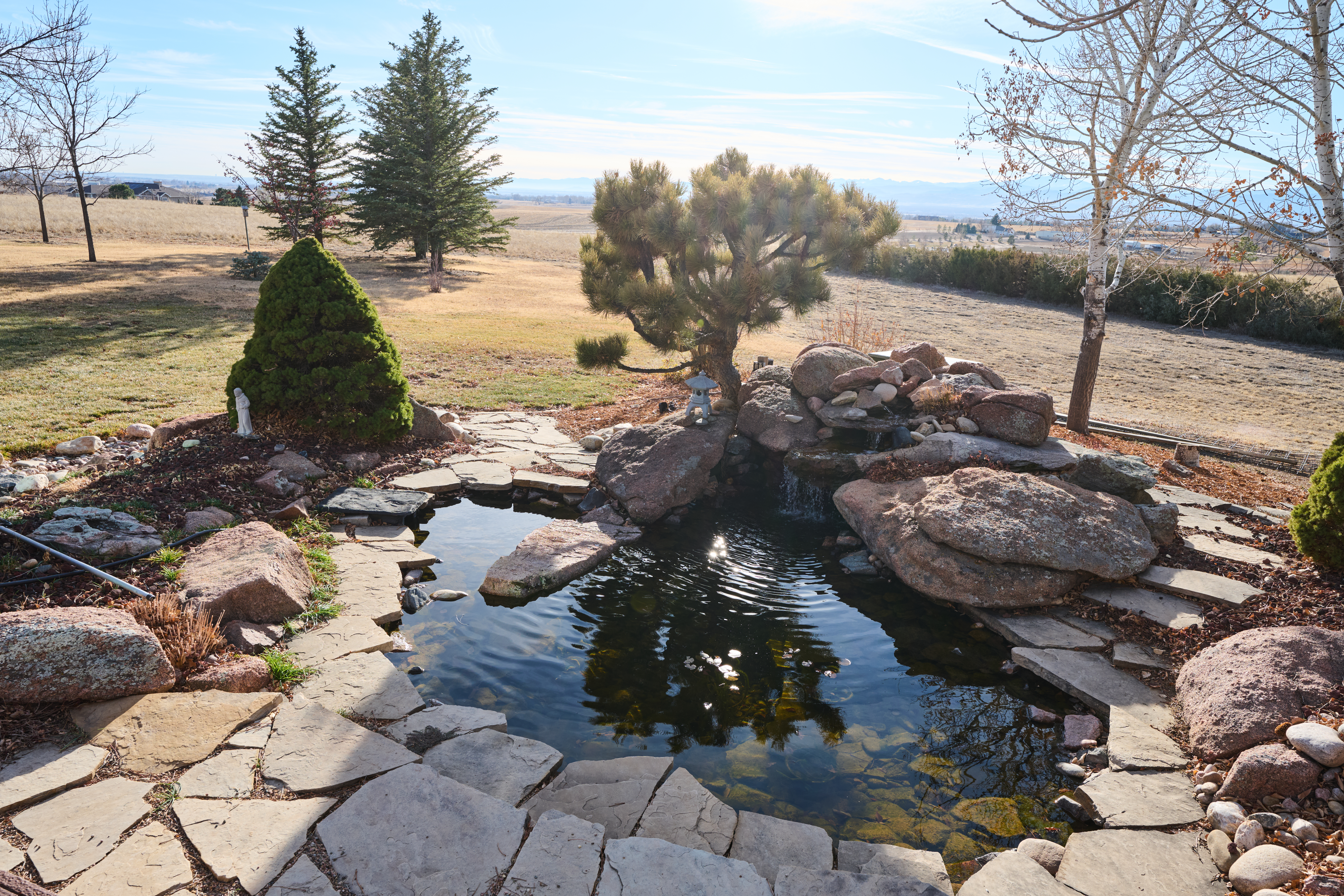
Preparing your pond for the winter can keep it healthy until springtime. Learn how to winterize a pond with this how-to guide.